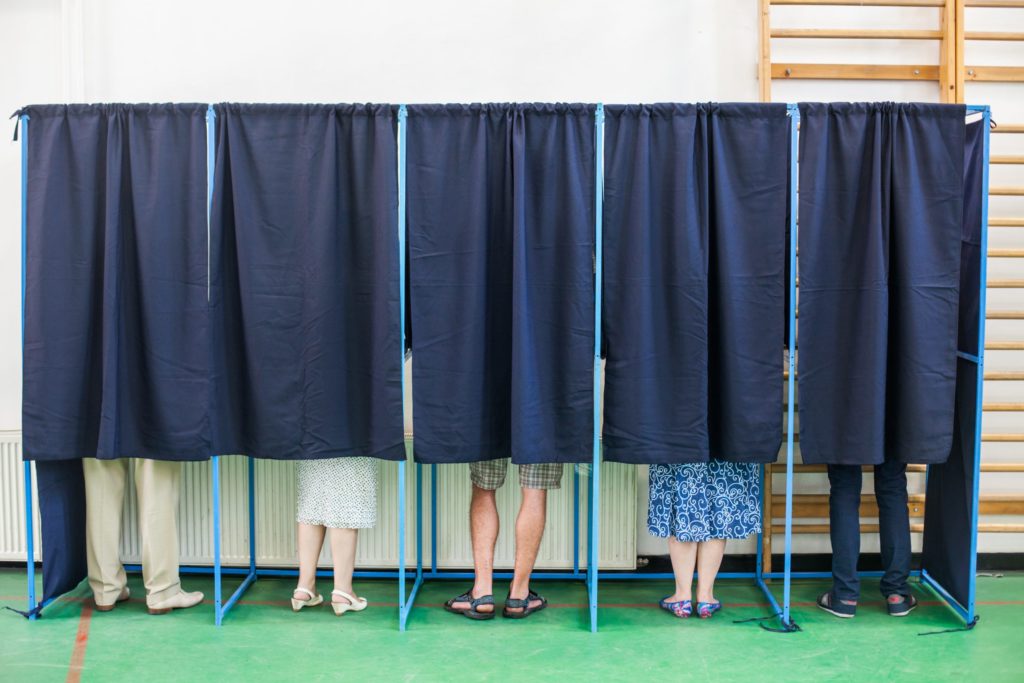The NDAA Amendment Process
On Monday, the Senate resumed consideration of the National Defense Authorization Act for Fiscal Year 2021 (S. 4049; NDAA).
Senators have filed over 766 amendments to the NDAA reauthorization bill. But it appears unlikely that most senators will offer any of the amendments that they filed to the legislation. As of July 20, the Senate disposed of a number of amendments by unanimous consent and scheduled six for up-or-down recorded votes at a time to be determined by Majority Leader Mitch McConnell, R-Ky., and Minority Leader Chuck Schumer, D-NY. The Senate also tabled (i.e., defeated indirectly) an amendment offered by Senator Rand Paul, R-Ky. (The Senate tabled the Paul Amdt. 2011 by a vote of 60 to 33.)
The steps senators took to get to this point are depicted below.
The State of Play (A Step-By-Step Guide)
The steps senators have taken to get to this point in the NDAA reauthorization debate are highlighted below. Each branch on the amendment tree is color coded according to its status in that step.
- Blue = Underlying legislation to which senators offer amendments
- Yellow = Pending amendments
- Red = Branches on tree eliminated by pending (yellow) amendments
- Green = Open branches
- White/No Color = Branches Not yet available
Step 1
Senate begins debate on S. 4049
Senators approved the motion to proceed to S. 4049 on June 29 by a vote of 89 to 4. (Prior to voting to begin consideration on S. 4049, senators invoked cloture on the motion to proceed by a vote of 90 to 7.)
Step 2
The Chairman of the Armed Services Committee, James Inhofe, R-Okla., offered a substitute amendment (S. Amdt. 2301) immediately after senators agreed to consider S. 4049 on the Senate floor.
Inhofe’s amendment is an amendment in the nature of a substitute (ANS) because it strikes everything after the enacting clause in the underling bill (S. 4049) and inserts new legislative text.
The operative amendment tree depicting the opportunities senators have to amend S. 4049 is Chart 4 (depicted in Riddick’s Senate Procedure) because Inhofe’s amendment was the first amendment offered to the legislation and it is an amendment in the nature of a substitute.
After the Inhofe Amdt. 2301 is pending, it is treating as part of the underlying bill for purposes of amendment. Senators can then offer amendments at branches A, C, and E.
Step 3
McConnell then offered Amdt. 2080 on behalf of Rob Portman, R-Ohio, to the Inhofe Amdt. 2301 (occupying branch C).
McConnell’s amendment is a first-degree perfecting amendment that would insert new text in the substitute amendment. By offering it, McConnell closes branches A and B on the amendment tree and opens branch D.
If a senator offers a second-degree amendment to at branch D to McConnell’s first-degree amendment at branch C that he opposes, McConnell can withdraw his amendment, which would dispose of the second-degree amendment as well. McConnell could then use his priority of recognition as majority leader to gain the floor immediately after withdrawing his amendment to fill branches C and D with perfunctory amendments in order to prevent another senator from offering a similar amendment at branch D.
The only open spot on the amendment tree at this point in the debate is branch E on the left side of the tree. While a senator may get an up-or-down vote on his or her amendment by offering it at branch E, the amendment will be wiped out if the Senate subsequently approves the Inhofe Amdt. 2301.
The McConnell amendment acts as a blocker amendment. It allows him to maintain some control over the floor debate. Until senators dispose of it in some way, they will need unanimous consent to set it aside temporarily so that they can offer other amendments to the underlying legislation (i.e., Inhofe Amdt. 2301). With the blocker amendment in place, McConnell is therefore in a stronger vis-à-vis his colleagues who want to offer an amendment to the NDAA reauthorization. If McConnell refuses to grant his consent to set aside the blocker amendment, the only leverage senators have left under the Senate’s current precedents is to block cloture. Doing so forces McConnell to choose between allowing a vote on the amendment in question and not passing the NDAA reauthorization. However, blocking cloture is difficult because it takes 41 senators not to vote to end debate on the NDAA.
Step 5
Inhofe then announces that he and the ranking minority member on the Armed Services Committee, Jack Reed, D-R.I., have reached an agreement on “the first managers’ package” (i.e., a package of noncontroversial amendments approved by the chairman and the ranking member). Inhofe informs his colleagues that the Republican and Democratic cloakrooms will be hotlining the amendments included in the package prior to asking unanimous consent that the Senate adopt the managers’ package.
McConnell then asks unanimous consent “that the Senate be in a period of morning business.” Doing so takes the NDAA reauthorization off the Senate floor, thereby preventing senators from offering amendments to branches E or D. McConnell asked consent that senators be “permitted to speak” in morning business “for up to 10 minutes each.”
No senator objected to McConnell’s unanimous consent request even though it prevented them from offering amendments and debating the NDAA reauthorization bill.
Step 6
Inhofe asked unanimous consent that
at a time to be determined by the majority leader in consultation with the Democratic leader, the following amendments be made pending en bloc and the Senate vote in relation to the amendments in the order listed, with a 60-affirmative vote threshold for adoption, and that there be 2 hours of debate on each amendment, equally divided between the two leaders or their designees, prior to the vote in relation to each amendment. Those amendments are: Schatz No. 2252, Inhofe No. 2411, Sanders No. 1788, Cornyn No. 2244, Shaheen No. 1729, and Tester No. 1972, as modified.
No senator objects.
Step 7
McConnell then files cloture on the Inhofe Amdt. 2301 and the underlying legislation (S. 4049). He also asks unanimous consent that the two cloture motions “ripen” (i.e., come before the Senate for a vote) after the Senate disposes of the Tester Amdt. 1972.
No senator objected.
McConnell later asks unanimous consent that
that the filing deadline for first-degree amendments with respect to the cloture motions filed during today’s session be at 5 p.m., Monday, July 20. I further ask that no second-degree amendments be in order to the following amendments: 2252, 2411, 1788, 2244, 1729, and 1972, as modified,
No senator objected.
Step 8
Pursuant to the Senate’s previous order, McConnell and Schumer scheduled votes on the Schatz Amdt. 2252 and the Inhofe Amdt. 2411 to occur on Tuesday at 11:45 am. The two leaders also scheduled vote on the Shaheen Amdt. 1729 and the Cornyn Amdt. 2244 to occur at 4:00 pm.
Future Steps
McConnell and Schumer have not yet scheduled votes on the Sanders Amdt. 1788 and the Tester Amdt. 1972.
The Senate may process other amendments under the institution’s rules and precedents and by unanimous consent. However, senators are not permitted to offer second-degree amendments to amendments 2252, 2411, 1788, 2244, 1729, and 1972 under the terms of the previous unanimous consent agreement. Senators can offer amendments under the rules and precedents to branch E (and subsequently branch F) on the left side of the amendment tree and branch D on the right side. Senators must ask unanimous consent to set aside the pending amendments and offer an amendment in all other instances.
Senators may also adjudicate the Senate’s amendment precedents by offering an amendment without asking unanimous consent. The effective of offering a so-called third-degree amendment, if successful, would be to create a new branch on the amendment tree. The amendment trees that senators follow today evolved over time as a result of senators adjudicating past precedents and creating new branches on the tree to increase the opportunities senators have for offering amendments.
The Senate will vote on cloture on the Inhofe Amdt. 2301 after senators dispose of the Tester Amdt. 1972. If invoked, senators will have up to thirty hours to offer germane amendments and debate the legislation. When all time has been used, or no senator seeks recognition to offer an amendment or debate, the Senate will proceed to an up-or-down vote on the Inhofe Amdt. 2301. After that vote, the Senate will vote on whether to invoke cloture on the underlying bill (S. 4049) (as amended if amended by the Inhofe Amdt. 2301.)








